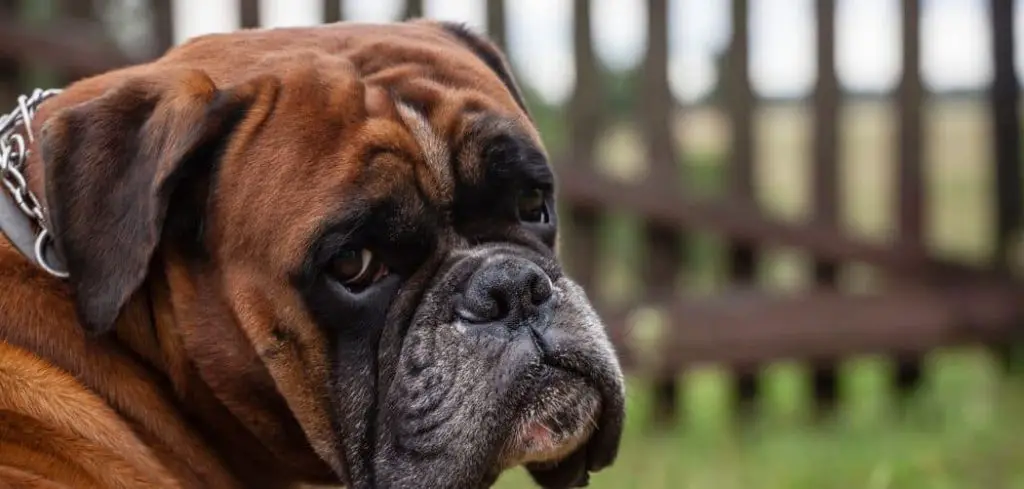Excessive panting combined with frequent urination in dogs can be concerning for any dog owner.
We outline the common causes of panting and frequent urination in dogs, what you can do at home, and when to seek veterinary help.
Table of Contents
Dog Panting and Peeing a Lot — Why It Happens
A dog panting and peeing a lot happens because of hormonal or metabolic issues. Conditions like Cushing’s disease, diabetes, or kidney disease cause increased thirst (polydipsia) and urination (polyuria), which are often paired with panting due to stress on the body. Some medications, like steroids or diuretics, can also cause this pattern.

Dog Panting and Peeing a Lot: Common Causes
Urinary Tract Infections (UTIs)
Urinary tract infections are a common cause of frequent urination and panting in dogs. UTIs can cause discomfort and pain, prompting your dog to urinate more often while also feeling stressed or anxious, which may increase panting.
Other signs may include blood in the urine, straining to urinate, or licking the genital area excessively.
Veterinary evaluation is essential to diagnose and treat UTIs with antibiotics and supportive care to prevent kidney involvement.
Read more: Dog Panting and Drinking a Lot (Is it normal?)
Diabetes Mellitus
Diabetes in dogs can trigger increased thirst, frequent urination, and panting. Elevated blood sugar leads to excessive urine production, dehydration, and increased body temperature, which can cause dogs to pant more.
Additional symptoms include weight loss despite normal or increased appetite, lethargy, and changes in coat condition.
Early diagnosis and management with diet, insulin therapy, and veterinary monitoring are critical to prevent complications.
Cushing’s Disease
Cushing’s disease, caused by excessive cortisol production, can lead to increased urination and panting.
This hormonal imbalance affects metabolism, fluid balance, and stress responses in dogs, often resulting in a combination of these symptoms.
Dogs with Cushing’s may also show hair loss, a pot-bellied appearance, thinning skin, and excessive thirst. Treatment often involves medication or surgery, depending on the underlying cause.
Kidney Disease
Kidney disease can cause dogs to pant and urinate frequently due to impaired fluid regulation. Diseased kidneys may struggle to concentrate urine, resulting in larger volumes of urine and compensatory increased water intake, leading to dehydration and panting.
Signs include vomiting, loss of appetite, lethargy, and foul-smelling urine. Early detection through blood work and urinalysis can help manage the condition and slow progression.
Heart Disease
Certain heart conditions can present with panting and increased urination. Congestive heart failure or other cardiac issues can impair circulation and kidney function, resulting in more frequent urination. Panting occurs as the body tries to maintain oxygenation.
Watch for coughing, exercise intolerance, rapid heartbeat, or fainting. Prompt veterinary care is necessary to manage heart disease and prevent serious complications.
Anxiety or Stress
Anxiety can cause dogs to pant and urinate more frequently. Situational stress, separation anxiety, or exposure to new environments can trigger these behaviors, even without underlying medical issues.
Signs include pacing, whining, drooling, trembling, or clinging behavior. Behavioral modification, consistent routines, and sometimes anti-anxiety medications under veterinary guidance can help alleviate these symptoms.
Medications and Hormonal Changes
Certain medications and hormonal imbalances may increase panting and urination. Steroids, diuretics, or hormonal disorders such as thyroid disease can affect fluid balance and metabolism, causing your dog to drink and urinate more while panting.
Signs may include changes in weight, coat quality, or appetite. A veterinary review can adjust medications or provide treatment for hormonal conditions to reduce these symptoms.
What to Do If Your Dog Is Panting and Peeing a Lot
Provide constant access to fresh water and a clean area for urination. Monitoring the timing, frequency, and context of panting and urination can help identify patterns and triggers for your veterinarian.
Ensure your dog maintains a healthy diet and weight, as obesity can exacerbate urinary and respiratory issues.
Minimize stressors in the dog’s environment, including loud noises or changes in routine, to help reduce anxiety-related panting.
Observe for additional symptoms such as vomiting, lethargy, or changes in appetite, as these may indicate a medical condition that requires prompt veterinary care.
Keep a log of medications, supplements, or recent illnesses, as this information can help your veterinarian pinpoint potential causes.
When to Call or Visit Your Vet
Immediate veterinary attention is recommended if your dog shows:
Persistent or labored panting
Excessive urination with blood or discomfort
Weakness, collapse, or fainting
Vomiting, diarrhea, or loss of appetite
Signs of pain or sudden distress
Suspected diabetes, Cushing’s disease, or kidney/heart issues
Prompt evaluation ensures early diagnosis and appropriate treatment to prevent complications.
Read more: Dog Peeing a Lot and Not Eating (Here’s why)
Key Takeaway
Panting and frequent urination in dogs can range from harmless behavioral responses to signs of serious medical conditions such as diabetes, kidney disease, or heart problems.
Monitoring your dog’s behavior, maintaining proper hydration, and seeking veterinary guidance when necessary can help manage these symptoms.
Early identification of underlying causes ensures that your dog remains healthy, comfortable, and stress-free.
